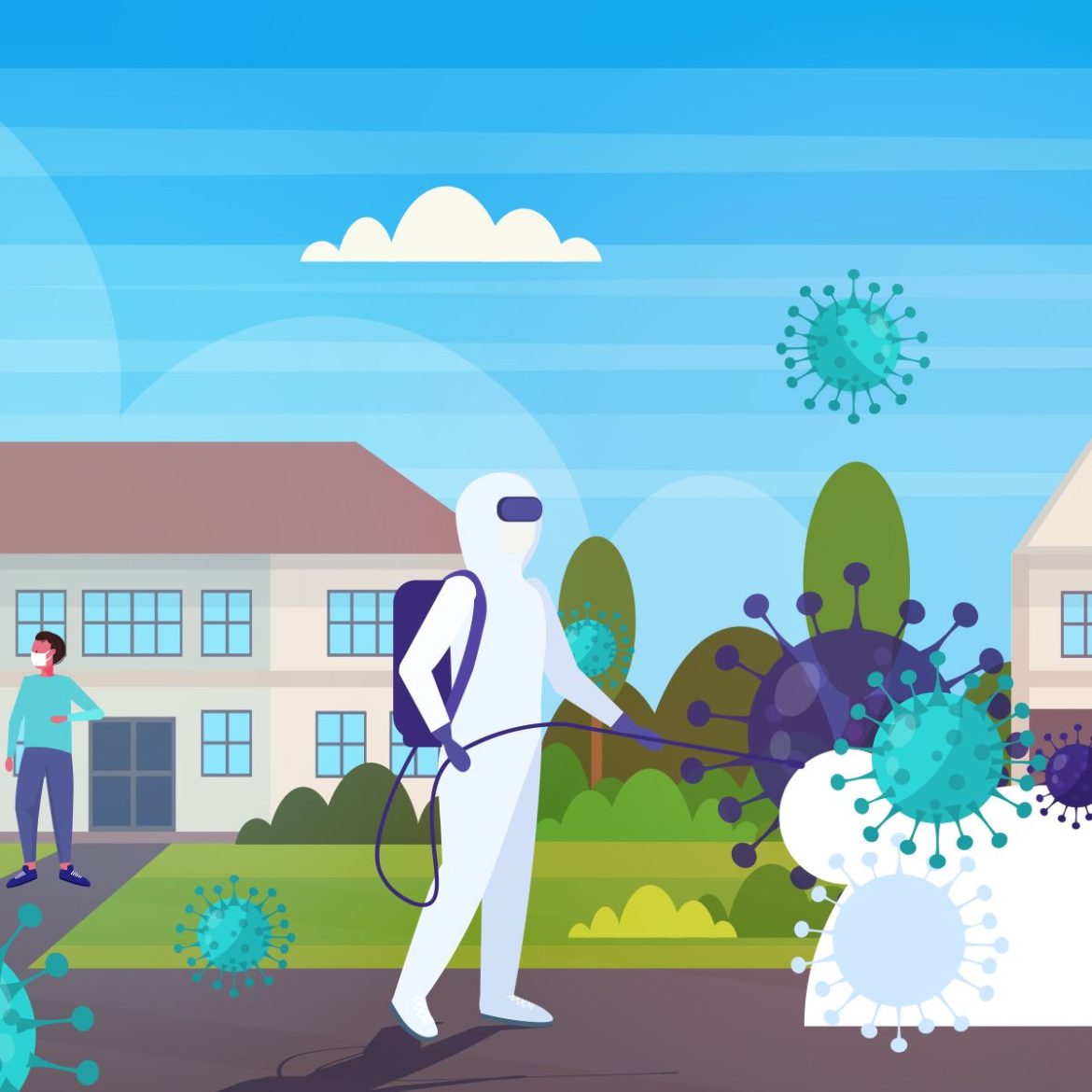info@puhastusekspert.ee +372 5611 1048
Disinfection: how to Do it and What is its Purpose?
Puhastusekspert, in cooperation with the Health Board, provides recommendations for preventing the spread of viruses.
Currently, the Government of the Republic of Estonia has issued guidelines to the public: stay home if possible, avoid close contact with people, and wash your hands. All of this is necessary to prevent the further transmission of the virus.
The more people infected with the virus, the more spaces there are where infected individuals have been, raising the question of what to do with these premises. Companies are being sought to disinfect these spaces, even as disinfectants are in short supply. We have consulted with many individuals and sought advice on disinfection in various circumstances. We have received inquiries about how to disinfect air, ceilings, large glass walls, sofas, and even streets. In summary, regarding all these requests, it seems that hazmat suits, respirators, rubber boots, the smell of chlorine, and spraying are what instill public confidence. All of this is primarily done to “reassure the public.” Even when there is a more rational way to eliminate the virus, people are reluctant to forgo comprehensive disinfection. Companies present themselves on social media in this manner, demonstrating care for their clients and hoping that such actions will positively influence their reputation.
Indrek Kiisler stated in his address that currently there is no point in wasting human resources and money on activities that lack purpose or substance. Disinfection, as it is currently being carried out, largely falls into this category. Virologist Andres Merits has stated that the virus is currently “young and foolish.” Numerous studies have shown how reckless and excessive disinfection can turn a “young and foolish” virus into an “old and wise” one, making the situation considerably worse. Therefore, it is currently crucial to focus on how to make premises sufficiently clean and virus-free in a sensible manner, and to avoid the damages associated with thoughtless disinfection.
The cleanliness and hygiene of premises where COVID-19 infected individuals have been are crucial. This cannot be taken lightly. So, how should one proceed?
- The virus remains in the air for a short time; air disinfection is not necessary. Likewise, it is not necessary to disinfect surfaces that people do not come into contact with, such as ceilings, streets, and walls.
- The latest study on COVID-19 states that the virus can remain on surfaces for 2-9 days. Therefore, if possible, keep the premises unused for 10 days, after which the virus will have been destroyed.
- Map and clean contact surfaces with particular care. This applies both when it is possible to keep the premises unused for 10 days and when the premises are in continuous use. For cleaning, a solution of a weakly alkaline cleaning agent can be used; for smooth surfaces, a microfiber cloth moistened with water is sufficient. The wiping methodology is important: appropriate moistening, sufficiently firm wiping, folding the cloth, and ensuring the cleanliness of the cloths. Watch the video on cleaning contact surfaces https://www.youtube.com/watch?v=AO9VOV2PcVU
- In public spaces, it is recommended to clean contact surfaces more frequently, every 2-4 hours.
- If an infected person has been in the premises and it was not possible to close the premises for 10 days, in addition to cleaning, virus elimination can be enhanced by disinfecting contact surfaces. It is important to note that to destroy COVID-19, a disinfectant containing at least 0.1% sodium hypochlorite, 70% ethanol, 75% 2-propanol, hydrogen peroxide, or similar, needs to act for at least 1 minute. Refer to the product data sheet and biocide certificate of the substance and verify its reliability. It should also be considered that these substances may damage surfaces, meaning that after the required contact time, it may be necessary to clean the surfaces again.
- It is important that the person carrying out the disinfection wears personal protective equipment.
See more detailed instructions on the Health Board’s website: https://www.terviseamet.ee/sites/default/files/Nakkushaigused/Juhendid/COVID-19/soovitused_tohusaks_puhastamiseks_ja_desinfitseerimiseks_taiendatud_18.03.2020_0.pdf
